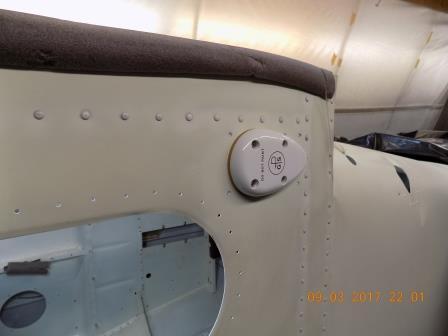Attempting to forecast the future of a technological domain as mature and safety-critical as aviation navigation requires an understanding of the long-term, evolutionary trends that are reshaping the industry. A well-grounded Aircraft GPS Antenna Market prediction is not one of a radical, disruptive change in the fundamental technology but of a steady and powerful evolution towards greater precision, higher integrity, and deeper integration with other aircraft systems. The future of the aircraft GPS antenna is not about a new way of receiving satellite signals but about making that reception more robust, more resilient, and more trustworthy. The market's future will be defined by the adoption of multi-frequency capabilities, the development of advanced anti-jamming and anti-spoofing technologies, and the creation of more integrated, "smart" antenna systems, ensuring that satellite navigation remains the reliable bedrock of aviation for decades to come.
In the near to medium term, a key prediction is the widespread and accelerating adoption of multi-frequency and multi-constellation antennas as the new standard across all segments of aviation. While many current systems rely primarily on the original civilian GPS L1 signal, the future is about leveraging the new, more modern signals being broadcast by the GPS constellation (such as L2C and L5) and the signals from other global systems like Galileo. A multi-frequency antenna can receive and process these different signals simultaneously. This provides a major advantage, as it allows the receiver to correct for errors caused by atmospheric distortion, which is the largest source of error in single-frequency GPS. This leads to a dramatic improvement in the accuracy of the position fix, from several meters down to the sub-meter level, which is a key enabler for more advanced and demanding navigation procedures.
Looking further ahead, a major area of focus and a key long-term prediction will be the development and deployment of more sophisticated technologies to ensure the integrity of the GNSS signal in an increasingly contested and congested radio frequency environment. This is a particularly critical issue for the military and defense sector but is also a growing concern for commercial aviation. The trend is towards the development of antennas with advanced anti-jamming capabilities. This can be achieved through techniques like controlled reception pattern antennas (CRPAs), which use multiple antenna elements and sophisticated signal processing to nullify or "steer away from" interfering signals. There is also a major focus on anti-spoofing technology, which is designed to detect and reject false, maliciously generated GNSS signals that are intended to deceive the aircraft's navigation system, a critical safety feature.
Perhaps the most significant long-term prediction for the market is the evolution of the antenna from a simple, passive component into a more integrated and intelligent "smart aperture." The future will see a move towards more tightly integrated systems where the antenna, the low-noise amplifier, the filtering, and even some of the initial signal processing from the receiver are all combined into a single, highly optimized and compact line-replaceable unit (LRU). This trend is about creating a more holistic and robust front-end for the navigation system. Furthermore, we may see the convergence of the GPS antenna with other aircraft antennas, such as those for satellite communications (SATCOM). The development of advanced, electronically steered phased array antennas could allow a single physical aperture on the aircraft's skin to perform multiple functions, reducing drag, weight, and complexity.
